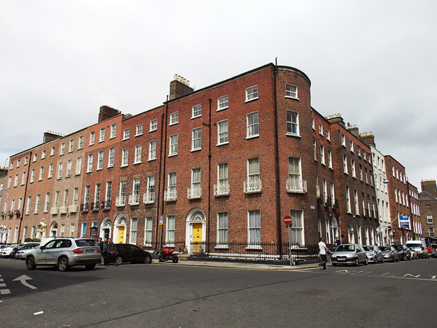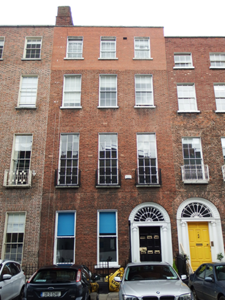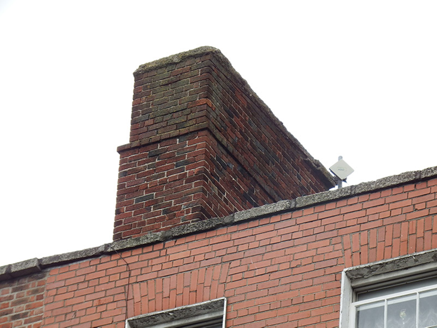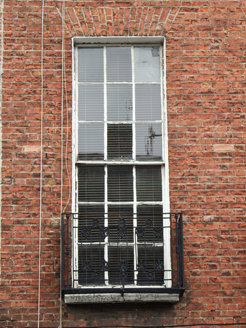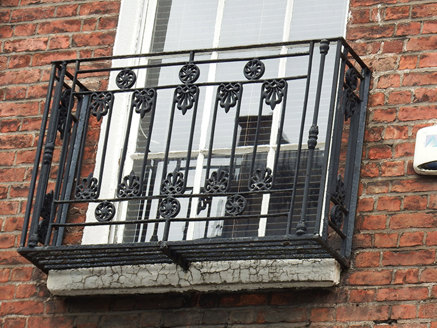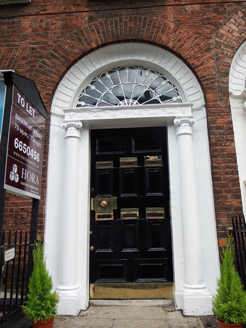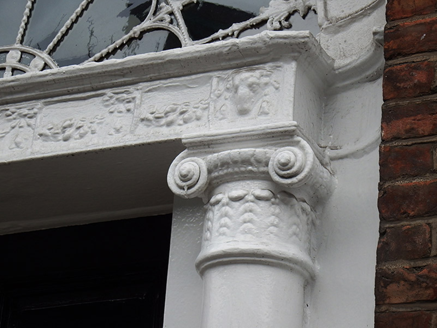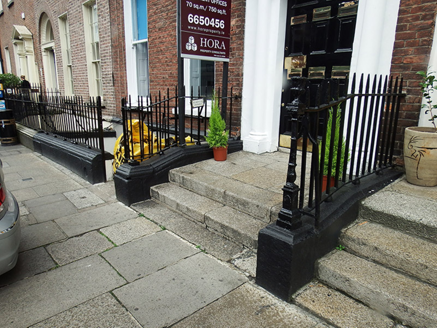Survey Data
Reg No
50100302
Rating
Regional
Categories of Special Interest
Architectural, Artistic
Original Use
House
In Use As
Office
Date
1780 - 1790
Coordinates
316323, 233344
Date Recorded
26/07/2016
Date Updated
--/--/--
Description
Attached three-bay four-storey former house over basement, built c. 1785 as pair with No. 12 to west and having shallow bow to rear elevation. Now in commercial office use. Pitched roof to front, hipped to east end, parallel to street, behind rebuilt red brick parapet with granite coping, and two unequal hipped roofs to rear, larger rounded over bow. Rebuilt shouldered brick chimneystacks to party wall with No. 11, lacking pots. Concealed rainwater goods. Flemish bond brick walling, rebuilt to top floor, having painted masonry plinth course over painted rendered basement walls; rendered to rear. Square-headed window openings, diminishing in height to upper floors, with painted rendered reveals, painted granite sills, and having decorative cast-iron balconettes to first floor. Timber sliding sash windows, replacement one-over-one pane to ground floor with ogee horns, nine-over-nine pane to first floor, six-over-six pane to second and third floors, having convex horns to second floor, and one-over-one pane to basement; similar fenestration to rear. Round-headed door opening with painted rendered masonry doorcase with engaged Ionic columns having acanthus flower-enriched capitals, entablature, frieze detailed with urn, festoons, aegicrania and foliate garlands, leaded petal fanlight with scalloped archivolt, and ten-panel timber door with brass furniture. Granite entrance platform with three steps to street. Wrought-iron railings with decorative cast-iron corner post on painted granite plinth, enclosing basement area. Buildings to rear of plot.
Appraisal
Forming a cohesive pair with No. 12, No. 11 Hume Street was built about 1785 by the stuccodore and master builder Charles Thorp. Characterized by finely balanced proportions and graded fenestration, the enriched Ionic doorcase and pretty petal fanlight add a decorative element to the otherwise restrained façade, which is highly representative of late eighteenth-century Dublin townhouses. Casey (2005) notes that the interior features Thorp's neo-Classical plasterwork. Thorp was a significant figure within the creation of neo-Classical interiors in Dublin and key examples of his work include the Blue Coat School and Royal Exchange. A worthy example of its type, No. 11 is an important component of the Georgian character of Hume Street and contributes to the wider architectural heritage of south Dublin, while also constituting an important record of Thorp's skill as a stuccodore.
